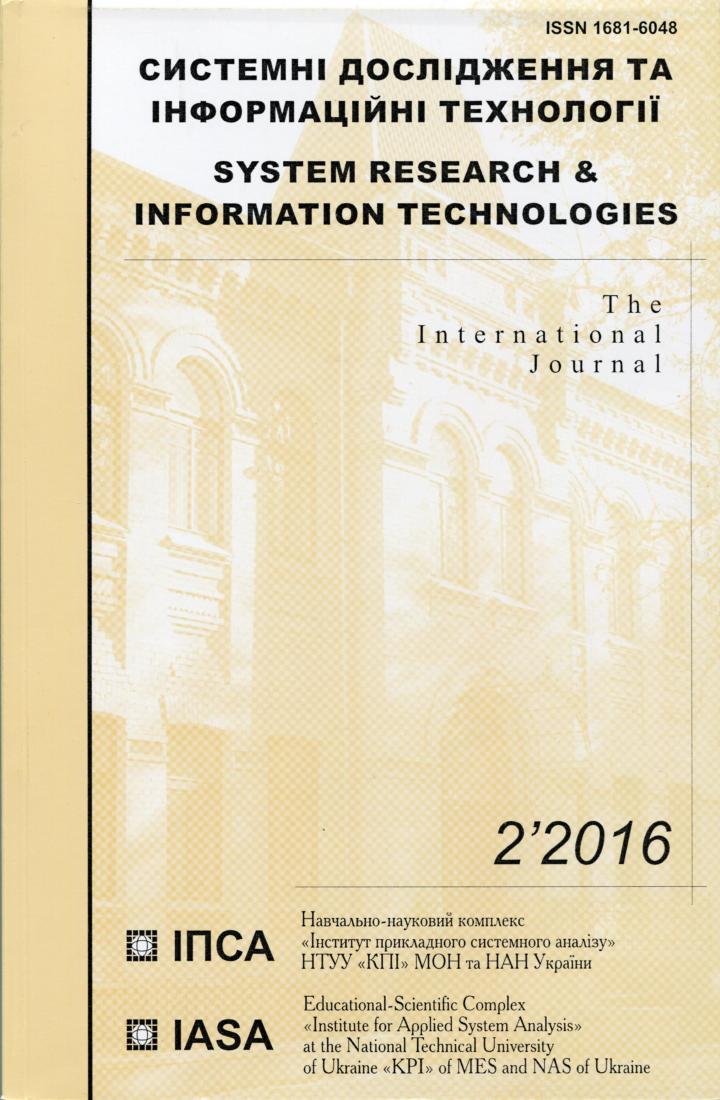Aggressive and peaceful behavior in multiagent systems on cellular space
DOI:
https://doi.org/10.20535/SRIT.2308-8893.2016.2.04Keywords:
artificial life, multiagent, neuroevolition, predator-preyAbstract
One of the key issues in Multi-Agent simulation approach is a consolidation of great model variety. Many researches govern own unique models that are similar in basic principles but for complex adaptive systems such as Artificial Ecosystems slight difference in architecture and parameters calibration could affect crucially on the emergent properties of the model. As it was denoted by the pioneers of the Artificial Ecosystems modelling Robert Axtell and Robert Axelrod: variety of Multi-Agent models need introduction of methods and technics that allows consolidating of its results. In work we present modification of model similar to classic Artificial Life spatial lattice models and trace the exhibition of aggressive and peaceful behavior depending on the income resource. We consider results of both models’ simulation as it was proposed in "docking models" method by Axtell and Axelrod.References
Epstein Joshua M. Growing artificial societies: social science from the bottom up /Epstein, Joshua M.; Axtell Robert, Brookings Institution Press, 1996. — 307 p.
Packard N. Intrinsic adaptation in a simple model for evolution. In: C.G. Langton (ed.): Artificial life, Redwood City, Addison-Wesley, CA, 1989. — P. 141–155.
Burtsev M.S. Artificial Life Meets Anthropology: A Case of Aggression in Primitive Societies. In: M. Capcarrere et al. (Eds.): ECAL 2005, LNAI, 3630 (2005). — P. 655–664.
Yaeger L. Computational Genetics, Physiology, Learning, Vision, and Behavior or PolyWord: Life in a New Context. In Langton, C. G. (ed.): Artificial Life III. Addison-Wesley, 1994. — P. 263–298.
Burtsev M., Turchin P. Evolution of Cooperative Strategies From First Principles. Nature 2006, 440. — P. 1041–1044.
Gras R., Golestani A., Hendry A.P., Cristescu M.E. (2015) Speciation without Pre-Defined Fitness Functions. PLoS ONE 10(9): e0137838. doi: 10.1371/journal. pone.0137838.
Burtsev M.S. (2004). Tracking the Trajectories of Evolution. Artificial Life / M.S. Burtsev. — V. 10. 4. — P. 397–411.
Bousquet F., Le Page C. (2004). Multi-agent simulations and ecosystem management: a review. Ecol. Modelling 176. — P. 313–332.
Axtell R. Aligning Simulation Models: A Case Study and Results / R. Axtell, R. Axelrod, J. Epstein, M. Cohen // Computational and Mathematical Organization Theory. — 1996. — 1. — P. 123–141.
Axelrod R. The Dissemination of Culture: A Model with Local Convergence and Global. Polarization / R. Axelrod // The Journal of Conflict Resolution. — Apr., 1997. — Volume 41, Issue 2. — P. 203–226.
D’Ambrosio D.B .Generative encoding for multiagent learning. In Proceedings of the Genetic and Evolutionary Computation Conference / D.B. D’Ambrosio, K.O. Stanley. — New York: ACM Press: ISBN: 978-1-60558-130-9. doi: 10.1145/1389095. 1389256.

